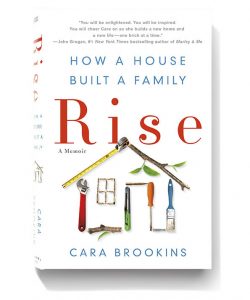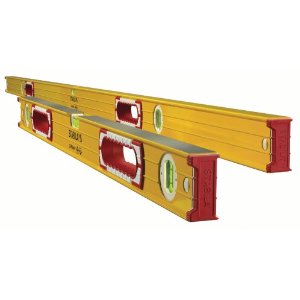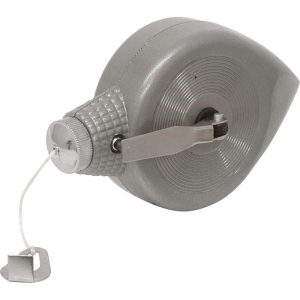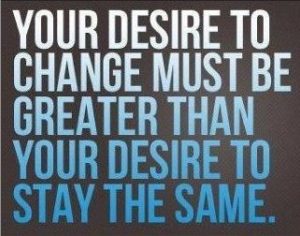There’s Something Emotionally Fulfilling About Creating
I was having a conversation earlier this week with Cheri at Agora Architecture about a project that we are working on. As we visited about the project we both became excited about the new ideas that were developing. I told her that what we’re doing was like giving birth. I then explained what I meant by that and then decided that I should share it with you.![]()
I’ve had this same discussion multiple times over the years. When talking with someone who understands this, the connection is intense. It really is amazing the similarities there are with building and giving birth.
CONCEPTION – “The forming or devising of a plan or idea.” This is where both creating and birthing start. There is a spark or an idea that begins to grow inside of us. Maybe it’s an idea for a new home, a new business, a new design, a new book, a new painting. There is something that has been planted inside by God and we need to pay attention to and act upon it.
GESTATION – “The development of something over a period of time.” As this little idea grows it will want, no need, to get out. We need to be aware and nurture this creation. As it goes through this process it will change on its way to becoming what it is meant to be. This can be painful as the idea continues to grow and stretches us, but it’s a necessary part of the process.
EXTERNAL HELP – When a mother becomes pregnant there is a need for support and help from spouses, family, doctors, nurses, specialists, etc. the same is true for other creations. To the project that I referred to earlier, it started as the idea for a new and used book store and café of Floyd Enterprises. There have been several people involved to this point and will be many more before it is finished. Currently there has been the Floyd family, Debby the realtor, Timber Creek Construction the contractor, Cheri and Hannah the architects. Giving birth requires help and a lot of it.
MESSY – Just like giving birth has some mess involved so do all creations. The process isn’t going to just happen without some clean up.

EXCITEMENT – This is the comparison that I think is the most pronounced. It’s hard to describe the feelings of holding the newborn for the first time. It’s the same when you have been a part of creating something that wasn’t there before. To see, touch and feel that thing that came from somewhere inside and is now tangible is amazing. There is a part of your DNA that has been transferred to it and it will be there forever.
 There is something natural about the act of creating, whatever the creation may be. This is something that was implanted in us at our conception. This is God’s DNA in us. We are created in His image, Genesis 1:26-31. He created the world and everything in it. This desire to create and the joy it gives is a part of who we are.
There is something natural about the act of creating, whatever the creation may be. This is something that was implanted in us at our conception. This is God’s DNA in us. We are created in His image, Genesis 1:26-31. He created the world and everything in it. This desire to create and the joy it gives is a part of who we are.
If you haven’t yet figured out what it is that you were put here to create, keep looking until you find it. When you do you’ll know it, because nothing else feels as satisfying as that.




 morning and conclude by spending the rest of the day, into the evening, playing games, eating and enjoying time with family. This doesn’t mean that I don’t enjoy all the other holidays, because I do. These three are just my favorites.
morning and conclude by spending the rest of the day, into the evening, playing games, eating and enjoying time with family. This doesn’t mean that I don’t enjoy all the other holidays, because I do. These three are just my favorites.
 Having been on both sides of the employee/owner relationship I can tell you that both work hard to achieve success. If all involved work hard together toward the same goal everybody wins. It is easy to look at other people and think they have it easy, but rarely is that the case.
Having been on both sides of the employee/owner relationship I can tell you that both work hard to achieve success. If all involved work hard together toward the same goal everybody wins. It is easy to look at other people and think they have it easy, but rarely is that the case.




 Another one of my top ten books is Andy Andrews’ book, “
Another one of my top ten books is Andy Andrews’ book, “


 Moving forward with the first next step I must narrowly clarify excellent delegation.
Moving forward with the first next step I must narrowly clarify excellent delegation.
 constantly wanting more TIME. To use a line from actress
constantly wanting more TIME. To use a line from actress 

 As part of the painting project I was making and installing the trim on these windows. Due to the age and style of the house the trim was more detailed than what is commonly used today. Not to mention that there was siding to cut back, house wrap and foil tape to install. It was taking me longer than I planned (another topic for later) and as I was working I thought about faster, cheaper ways that it could be done. I didn’t think about it very long before I decided that the short cuts wouldn’t be worth it. I wanted it done right.
As part of the painting project I was making and installing the trim on these windows. Due to the age and style of the house the trim was more detailed than what is commonly used today. Not to mention that there was siding to cut back, house wrap and foil tape to install. It was taking me longer than I planned (another topic for later) and as I was working I thought about faster, cheaper ways that it could be done. I didn’t think about it very long before I decided that the short cuts wouldn’t be worth it. I wanted it done right.
 A good example of this is a recent situation where a shelf caddy was installed in a shower out of plum. It was only out of plum about an 1/8” in 2’ which isn’t a lot. But it wasn’t right, it wasn’t level and it should have been. Now it’s got to be fixed, which could possibly mean cutting it out and replacing with a new one. At the very least it has to be taken back out and plumbed up. Either way it’s going to cost both time and money.
A good example of this is a recent situation where a shelf caddy was installed in a shower out of plum. It was only out of plum about an 1/8” in 2’ which isn’t a lot. But it wasn’t right, it wasn’t level and it should have been. Now it’s got to be fixed, which could possibly mean cutting it out and replacing with a new one. At the very least it has to be taken back out and plumbed up. Either way it’s going to cost both time and money.
 them that there are four simple rules for building well. Just make everything plumb, level, square and straight. Isn’t this great advice.
them that there are four simple rules for building well. Just make everything plumb, level, square and straight. Isn’t this great advice.




 and bad, that people have. This is especially evident with athletes, for example it has been reported that basketball superstar Michael Jordan wore the same pair of shorts under his NBA uniform for every game and Serena Williams ties her shoes the same way before every match and always bounces the ball five times before her first serve.
and bad, that people have. This is especially evident with athletes, for example it has been reported that basketball superstar Michael Jordan wore the same pair of shorts under his NBA uniform for every game and Serena Williams ties her shoes the same way before every match and always bounces the ball five times before her first serve.





